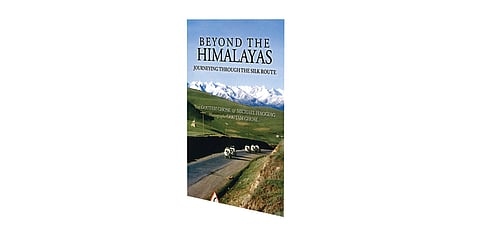

As a child growing up in the 1990s, names like Lhasa, Bukhara and Kashgar evoked images in my mind of places so magical and exciting that I was sure even Enid Blyton&rsquos The Faraway Tree series would pale in comparison. The year was 1994, and while I was busy watching Simba defeat Scar in The Lion King and Macaulay Culkin foil the plans of a crook in Richie Rich, little did I know that noted filmmaker Goutam Ghose was on a journey to those magical places.
Ghose was part of the Central Asian expedition organised by Major Hari Ahluwalia, one of the first Indians to successfully scale Mount Everest in 1965. It was an arduous 14,000-kilometre journey tracing the ancient Silk Road. Post return, the filmmaker did what he did best showcase the experience in a five-part series called Beyond the Himalayas (1996). Today, 23 years later, readers have the chance to visualise the route taken by the expedition team, through the eyes of Ghose in a namesake book. While most of the book is a &lsquonarration of the original soundtrack of the series&hellipsome chapters were freshly written for the book.&rsquo
Ghose&rsquos pictures weave a powerful narrative across the pages, evoking a sense of time gone by. From photos of the Mahindra Armada jeeps starting their long journey, to the smiling faces of the locals, the vastness of the regions to the authors (Ghose and Haggiag, who was the producer of the 1996 film) during the trip&mdashit&rsquos all ruggedly vintage.
The journey starts in Samarkand, before the route takes the entourage of scholars, scientists, doctors, rally drivers, as well as Ghose and Haggiag, to Kyrgyzstan, China, the &lsquodistant unknown land&rsquo of Tibet before finally reaching Nepal . The book isn&rsquot just a tale of the journey, but tells the readers about the history of the places, mixes folklore with then-current situations, informs about ancient medicine practices, the similarity of cultures, and, of course, Buddhism, so prevalent in the areas. The writing is straightforward and informative, while honest imagery provides readers a complete visual understanding of the adventure.
In present times, a journey to Central Asia has become far too common. With the advent of social media, the enthusiasm of travellers, and the lure of the exotic, trailing the Silk Route has become easier, even Instagram-friendly. The magic of the unknown has been replaced by visual grandness. While the route very much remains on my bucket list, I can&rsquot fathom how much the places would have changed today from the past two decades. Time can&rsquot stand still, can it
